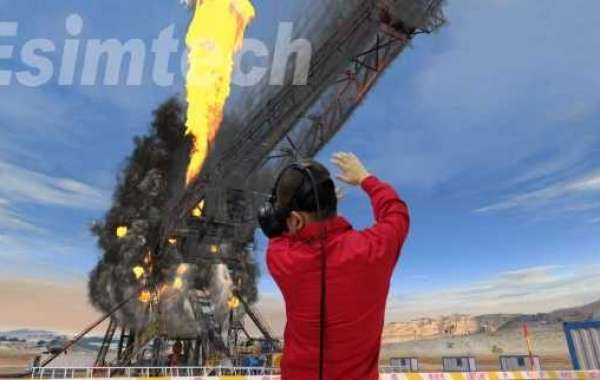To address this challenge, many oil and gas companies are turning to Virtual Reality (VR) simulators to enhance onboarding and emergency training.
Why VR Simulators?
VR simulators offer a unique and immersive learning experience that can significantly improve the effectiveness of emergency training. Here's why:
Real-world Simulation: VR technology allows trainees to experience realistic emergency scenarios, including fires, explosions, and equipment failures.
Hands-on Experience: Trainees can practice critical skills such as fire suppression, evacuation procedures, and first aid in a safe and controlled environment.
Risk Mitigation: By training employees to respond effectively to emergencies, companies can significantly reduce the risk of injuries, fatalities, and property damage.
Accelerated Learning: VR simulations can condense training time, allowing new employees to quickly acquire the necessary skills and knowledge.
Cost-Effective Training: VR simulators provide a cost-effective way to train a large number of employees without the need for costly real-world exercises.
Enhancing Onboarding with VR
VR simulators can be integrated into the onboarding process to provide new employees with a comprehensive understanding of safety procedures and emergency response protocols. Key benefits include:
Rapid Skill Acquisition: New hires can quickly learn essential safety skills and procedures.
Increased Retention: Immersive VR experiences can enhance knowledge retention and improve long-term recall.
Improved Confidence: By practicing in a safe virtual environment, new employees can gain confidence in their ability to handle emergency situations.
Reduced Training Time: VR simulations can accelerate the onboarding process, allowing new employees to become productive more quickly.
Best Practices for Implementing VR Simulator
To maximize the benefits of VR simulators, consider the following best practices:
Realistic Scenarios: Develop realistic and challenging scenarios that reflect the specific hazards and risks of the oil and gas industry.
Regular Training: Implement a regular training schedule to ensure that employees maintain their skills and knowledge.
Performance Tracking: Use analytics to monitor trainee performance and identify areas for improvement.
Continuous Improvement: Regularly update and refine the VR simulations based on feedback and emerging industry best practices.
By leveraging VR simulators, oil and gas companies can significantly improve the safety and preparedness of their workforce. This investment in technology will not only enhance onboarding but also contribute to a safer and more efficient workplace.





